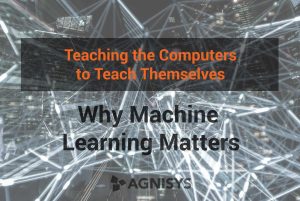 Machine learning (or “ML” for short) may have begun life as something of a buzzword, but it has long since proven itself to be anything but. At its core, the term itself describes a situation where computer scientists use statistical techniques to essentially “learn” with data, without being specifically programmed to do so. In essence, you build a system to complete a specific task. The more data you feed into the system, the better it gets at that task – all without requiring human beings to make those improvements on their own.
Machine learning (or “ML” for short) may have begun life as something of a buzzword, but it has long since proven itself to be anything but. At its core, the term itself describes a situation where computer scientists use statistical techniques to essentially “learn” with data, without being specifically programmed to do so. In essence, you build a system to complete a specific task. The more data you feed into the system, the better it gets at that task – all without requiring human beings to make those improvements on their own.
This seemingly straightforward concept has led to a massive disruption in the field of electronic design, especially over the last few years. It has already led to the creation of a brand new class of embedded systems that use both machine learning and deep learning, otherwise known as ML/DL systems.
The Power of Machine Learning: Breaking It Down
Although it’s still a relatively new concept in the modern context, machine learning is already having a massive impact on just about every industry. Businesses regularly use machine learning systems powered by customer data to help improve satisfaction whenever possible. If you can power a machine learning system to analyze user activity in real-time, you’re therefore in a better position to identify the conditions for a potential account closure before it happens. You can then proactively reach out to that customer and save the account before they head off into the arms of a competitor. Or, a financial services company might use machine learning to better respond to changes and fluctuations in the local market as they happen. The system itself can quickly identify trends and patterns that would have otherwise went unnoticed, alerting humans to the idea that something is about to happen so that they can react in the most appropriate way.







